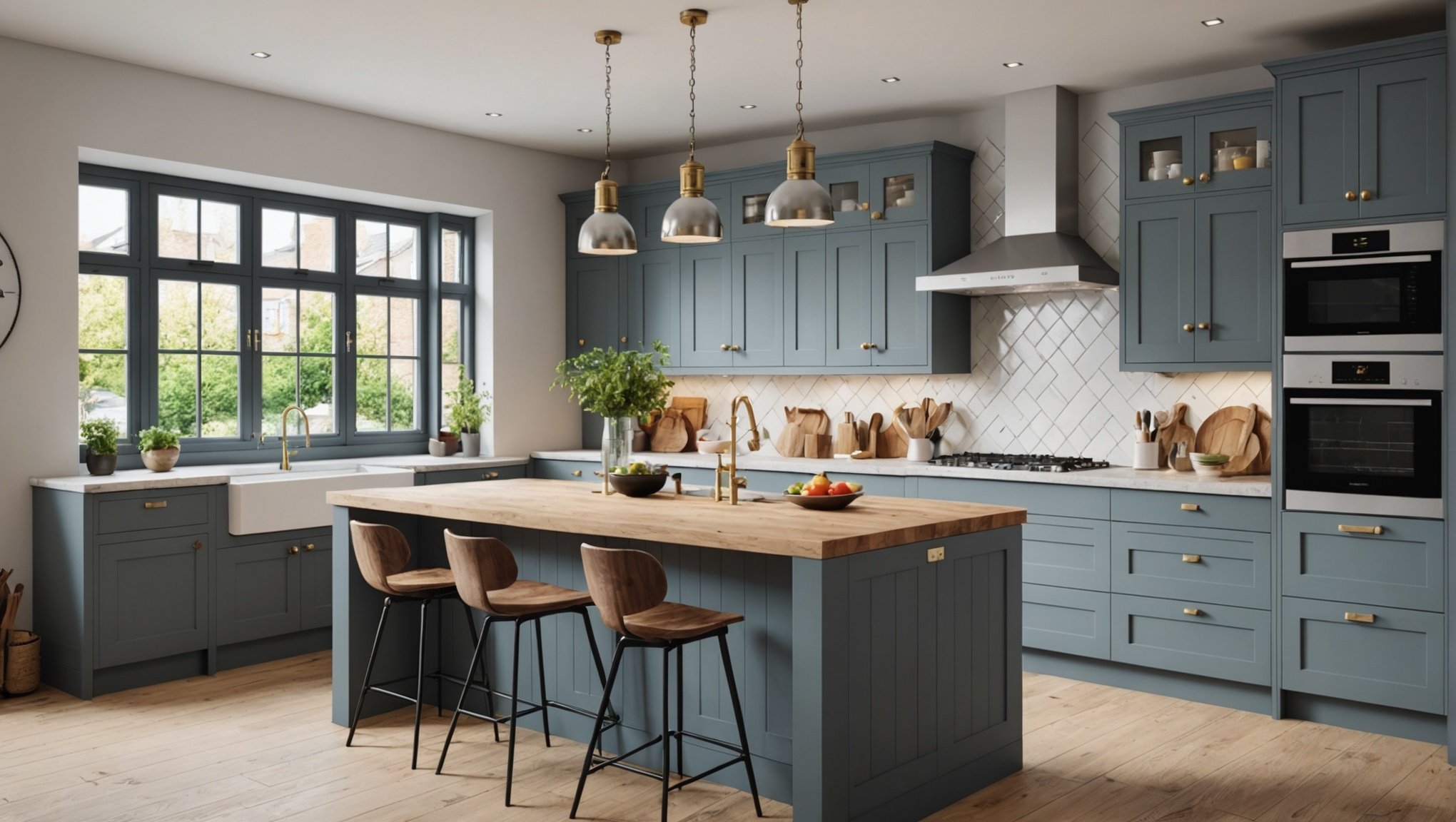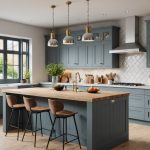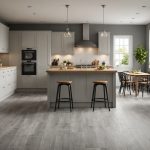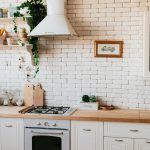Creating a functional and stylish kitchen in your UK terraced house can feel overwhelming. Limited space often leads to design compromises, but it doesn’t have to. This step-by-step guide reveals practical strategies tailored for small layouts. Discover how to maximise storage, enhance workflow, and incorporate your personal style. Transform your kitchen into a welcoming space that reflects your needs and tastes without sacrificing aesthetics or functionality. Ready to revamp your culinary haven? Let’s get started!
Understanding the Unique Challenges of UK Terraced House Kitchens
Exploring the intricacies of compact kitchen spaces.
In the same genre : Discovering Arthritis-Friendly Ergonomic Kitchen Tools for Smoother Cooking in the UK
Typical Dimensions and Layouts
UK terraced house kitchen design often features narrow and elongated spaces. These kitchens typically measure around 2 to 3 meters in width, creating a narrow kitchen layout that can be challenging to work with. The linear configuration is common, with appliances and cabinets aligned along one or both walls.
Common Challenges
Designing in such constrained spaces presents several challenges. One major issue is the limited counter space, which can hinder meal preparation. Additionally, storage is often insufficient, leading to clutter. The narrowness also restricts movement, making it difficult for multiple people to use the kitchen simultaneously.
Have you seen this : The Ultimate Guide to Choosing the Perfect Flooring for UK Kitchens with Underfloor Heating
Maximizing Space
To overcome these challenges, space optimization is crucial. Utilizing vertical space by installing tall cabinets can significantly increase storage. Incorporating pull-out shelves and corner units can maximize horizontal space usage.
- Vertical storage: Tall cabinets
- Horizontal efficiency: Pull-out shelves
- Space-saving appliances: Compact models
As one designer aptly noted, “In a narrow kitchen layout, every inch counts.” Emphasizing both vertical and horizontal space can transform a cramped kitchen into a functional culinary space.
Step-by-Step Planning Process for Kitchen Layout
Embarking on a journey to optimize your kitchen design.
Assessing Your Space
The first step in kitchen design planning is assessing your space. Measure the dimensions accurately to understand the potential and limitations. Consider the layout optimization for your specific kitchen. Note any architectural features like windows, doors, or alcoves that might influence the design. Observe how natural light enters the room, as it can impact the placement of key elements.
Establishing Your Needs and Preferences
Identify your cooking habits and lifestyle needs. Do you require more storage, or is counter space your priority? Understanding these preferences is crucial in space planning. Consider how often you entertain or cook elaborate meals, as this will dictate the kitchen zones and traffic flow.
Creating a Functional Floor Plan
Design a floor plan that emphasizes functionality. Start by identifying key kitchen zones: cooking, cleaning, and storage. Prioritize traffic flow to ensure smooth movement between these areas. Accessibility is vital; ensure that frequently used items are within easy reach.
- Cooking zone: Stove, oven
- Cleaning zone: Sink, dishwasher
- Storage zone: Cabinets, pantry
As one expert notes, “A well-planned kitchen layout is the heart of a functional home.”
Innovative Storage Solutions for Small Kitchens
Discover smart ways to maximize your kitchen space.
Vertical Space Utilization
In small kitchens, maximizing kitchen space is essential. One effective strategy is to use vertical space. Install tall shelves and cabinets that reach the ceiling. This approach not only provides additional storage but also keeps your kitchen organized. Consider using open shelves to display frequently used items, making them easily accessible.
Creative Storage Options
Smart storage solutions can transform a cramped kitchen. Pull-out drawers and corner cabinets are excellent for making the most of every nook and cranny. These options allow you to store more items without cluttering the countertops. Additionally, using transparent containers can help you quickly identify contents, saving time during meal preparation.
- Pull-out drawers: Maximize deep storage spaces
- Corner cabinets: Utilize awkward spaces
- Transparent containers: Easy content identification
Multi-Functional Furniture
Incorporating multi-functional furniture can further enhance your kitchen’s efficiency. Consider a kitchen island with built-in storage, or a table that doubles as a prep area. These pieces serve dual purposes, offering both functionality and style. As one expert suggests, “In a small kitchen, every piece of furniture should work twice as hard.”
Selecting Appliances and Fixtures
Enhancing kitchen efficiency and sustainability through informed choices.
Choosing Compact and Efficient Appliances
When selecting kitchen appliances, it’s crucial to consider size and efficiency. Compact models are ideal for small spaces, offering the same functionality as larger units without occupying excessive room. Look for appliances with multiple functions, like a microwave-convection oven combo, to maximize utility.
- Compact models: Save space
- Multi-functional units: Increase utility
Understanding Energy Ratings and Sustainability
Energy-efficient choices can significantly reduce your kitchen’s environmental impact. Check the energy ratings on appliances to ensure they meet sustainability standards. Investing in A-rated appliances not only conserves energy but can also lower utility bills.
“Choosing energy-efficient appliances is both an eco-friendly and economical decision.”
Selecting Fixtures that Enhance Functionality
The right fixtures can transform your kitchen’s functionality. When selecting a sink and faucet, consider models that optimize space and water efficiency. A pull-out spray faucet, for instance, adds flexibility for cleaning tasks. Choose a sink with integrated accessories, like cutting boards or colanders, to enhance your kitchen’s practicality.
- Pull-out spray faucet: Adds flexibility
- Integrated sink accessories: Enhance functionality
Budgeting and Compliance Considerations
Balancing costs and regulations in kitchen renovation.
Estimating Costs
When planning a kitchen renovation budget, it’s essential to estimate costs meticulously. Begin by itemizing expenses for materials, labor, and appliances. Consider cost-effective design options that do not compromise on quality. For instance, opting for laminate countertops instead of granite can significantly reduce expenses.
- Materials: Cabinets, countertops, flooring
- Labor: Installation, plumbing, electrical work
- Appliances: Compact, energy-efficient models
Understanding UK Building Regulations
Adhering to UK building regulations is crucial during renovation. These regulations ensure safety and compliance with national standards. Common requirements include proper ventilation, electrical safety, and fire-resistant materials. Consulting with a professional can help navigate these complex rules, avoiding costly errors.
“Compliance with building regulations not only ensures safety but also adds value to your property.”
Avoiding Common Pitfalls
Avoiding pitfalls in kitchen renovation can save time and money. Ensure your renovation plan aligns with both your budget and UK regulations. Common mistakes include underestimating costs and neglecting to secure necessary permits. Planning thoroughly and consulting experts can mitigate these issues, leading to a successful renovation.












